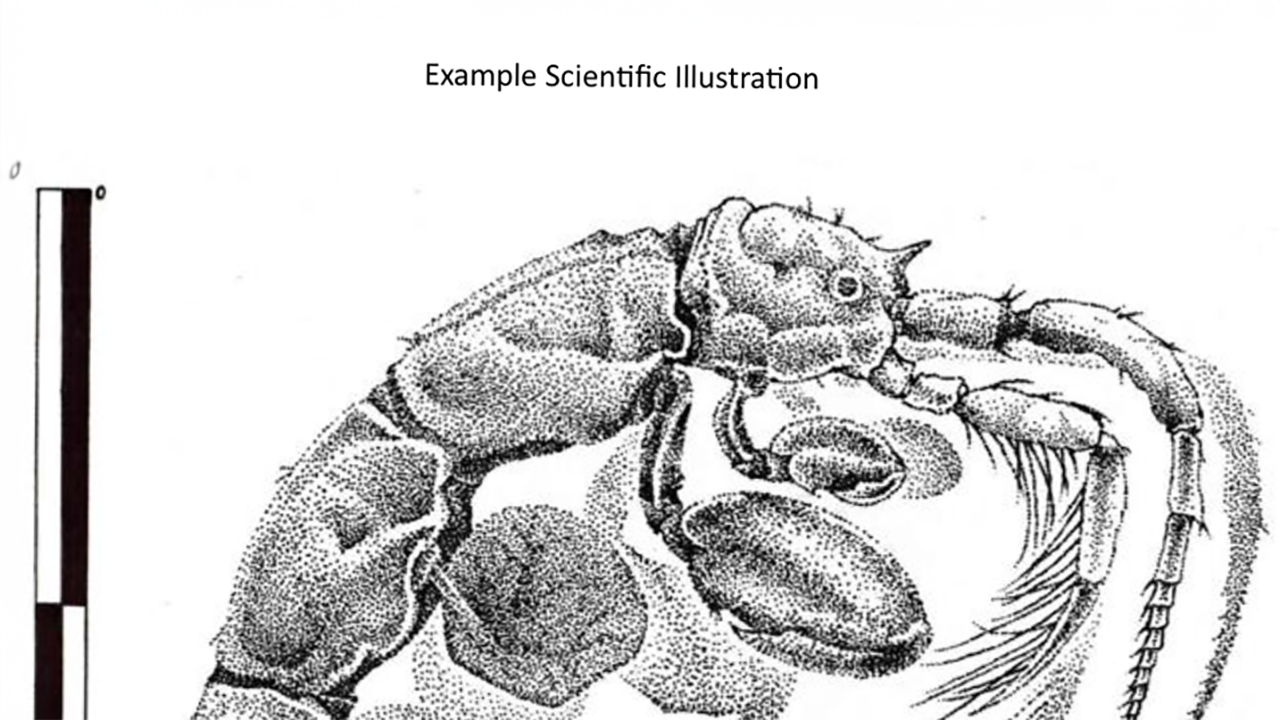Day 7: Examining Details

Unit Navigation
STANDARDS OVERVIEW
Reading Strategy:
Main idea practice.Science Concept:
Observing and recording details through scientific illustration.Reading TEKS:
2(b)(6) Comprehension skills: listening, speaking, reading, writing, and thinking using multiple texts. The student uses metacognitive skills to both develop and deepen comprehension of increasingly complex texts. The student is expected to: (G) evaluate details read to determine key ideas.Science TEKS:
2.1 Scientific and engineering practices. The student asks questions, identifies problems, and plans and safely conducts classroom, laboratory, and field investigations to answer questions, explain phenomena, or design solutions using appropriate tools and models. The student is expected to: (A) ask questions and define problems based on observations or information from text, phenomena, models, or investigations; (F) record and organize data using pictures, numbers, words, symbols, and simple graphs. 2.5 Recurring themes and concepts. The student uses recurring themes and concepts to make connections across disciplines. The student is expected to: (A) identify and use patterns to describe phenomena or design solutions.NGSS:
2-LS2-1 Science & Engineering Practices: Planning & Carrying Out Investigations Make observations (firsthand or from media) to collect data that can be used to make comparisons.CCSS:
2(b)(6) Comprehension skills: listening, speaking, reading, writing, and thinking using multiple texts. The student uses metacognitive skills to both develop and deepen comprehension of increasingly complex texts. The student is expected to: (G) evaluate details read to determine key ideas.Science and Literacy Connection:
When authors don’t tell us what the main idea of the text is, we must pay close attention to the important details. As scientists, we must pay close attention to every detail when creating a sketch of an object we are studying.Science Language:
A scientific illustration is picture or diagram that explains or helps make something clear, such as the anatomy of a butterfly.
-
Mini-Lesson
OVERVIEW
Today’s mini-lesson should be used to review and practice the reading strategies already used. Teachers are encouraged to use this time to best meet the needs of their learners. Teachers can determine if the mini-lesson will be facilitated with the whole class or with a particular inquiry circle that needs additional support. If you are working with a specific team, we suggest your other learners spend additional time working in inquiry circles.
PROCEDURE
-
Inquiry Circles
OVERVIEW
Today inquiry circle teams continue their research work to answer questions about their organisms.
Materials for the Inquiry Circles:
Each team needs:
- team Inquiry Charts
- pencils
- access to informational texts/media
Teacher needs:
- “Animal Resources” spreadsheet for ideas
PROCEDURE
Each italicized statement below contains suggested wording the teacher may choose to use for the lesson; additional teacher actions and considerations are in parentheses.
Before Inquiry Circles
- It’s time to get into our inquiry circles. (Have the Equipment Directors gather the Inquiry Chart for their team.) Today we will look for answers to different questions on your Inquiry Charts.
During Inquiry Circles (20 minutes)
- Remember, you may refer to the anchor charts to help guide your thinking. (Point to the posted anchor charts, and remind learners that they can use all the reading strategies taught, not just the one for that day.)
- The Lead Scientists will guide all research for the day by picking which questions will be answered, and the Data Scientists will record all source information and the answers to your research questions on the team Inquiry Chart. The Lab Directors and Equipment Director must help find the answers to the questions online and in texts.
- My role is to help guide the inquiry circles, but I expect you to work as a scientific team to solve your problems together. (While teams are working together, walk around the room to facilitate as needed.)
After Inquiry Circles (10 minutes)
- As we conclude our inquiry circles for today, each team will have a chance to share what they accomplished and learned.
- The Lab Director should lead the discussion with their inquiry circle team about today’s results. For example, Did your team use any reading strategies today? If so, which one(s)? What did your team learn about its animal? What problems did your team encounter? How did your team resolve those problems? (Give teams time to discuss.)
- (After you have allowed the teams to gather their thoughts, have the Data Scientists share with the class. Try to encourage teams to share a variety of things—you do not want just facts about animals, just reading strategies, or just cooperative learning strategies.)
- (When all teams have shared, thank them for their hard work and point out any excellent behaviors that you observed. If you noticed any problems in the teams during the lessons, take a moment to point them out, and explain your expectations for all future inquiry circles. Collect all Inquiry Charts or have Equipment Directors put them in their normal classroom place for ongoing work so that learners can easily access them.)
-
Guided Science Investigation
In this activity, learners will be challenged to make a sketch of an adult butterfly, first from memory and then from extended observation, then determine which sketch is better.
GUIDING QUESTIONS
Why do scientists record their observations? What is the value of detailed recordings?
BACKGROUND INFORMATION FOR THE TEACHER
For many hundreds of years, scientists have depended upon their artistic abilities to help them in their investigations of the natural world. They would not only observe some object or phenomenon but also sketch it. Sketching enabled them to see the finest details and permit them to review their observations in detail at a later date. While various forms of photography are now the norm, sketching still has an important place. Sketching requires that the scientist pay close attention to every detail. A quick shot with a camera captures every detail but until the scientist closely examines the image, important details may go unnoticed. That’s where sketching really helps.
SETUP
- Prior to class, prepare to project the title slide (slide 1) of the “Butterfly Image” slides; do not show the image of the monarch butterfly until Step 3 in the “Explore” section.
- Have example(s) of scientific illustration on hand.
SAFETY
- Remind teams daily to be gentle with the growth habitats during handling to prevent disturbing the larvae, especially once the chrysalis forms. Ideally, the growth habitats should be placed where teams can do daily observations without moving them.
- Please follow all district and school science laboratory safety procedures.
- It is good laboratory practice to have teams wash hands before and after any laboratory activity.
DAILY OBSERVATIONS
Give learners time to observe their organisms (whether they are in the larva, pupa, or adult stage), take measurements of the larvae (if applicable), and record their observations in their Butterfly Investigation Journals. Facilitate team discussions by asking questions, such as, What did you notice? What has changed since the last time you observed your caterpillars?
Materials for the Guided Science Investigation:
Each team member needs:
- blank paper
- drawing pencils
- Butterfly Investigation Journal
Teacher needs:
- “Butterfly Image” slides
- projector or white board
- sample scientific illustration
PROCEDURE
Engage
- Tell learners that as scientists, some of their work requires them to make a sketch or drawing as part of their observations. Explain that for a long time, scientists had to sketch because there were no cameras for picture taking.
- Hold up the example of a scientific illustration. Ask, What do you think the scientist needed to make such a detailed drawing? (Time, careful observation, etc.) Tell learners that these drawings, called illustrations, were important for remembering details. Ask, How we can record information today without drawing? (Cameras.)
Explore
- Tell learners that this morning, you saw a beautiful insect and took a picture of it. Explain that you want them to see the picture and make a sketch or drawing of it. Advance to the butterfly image (slide 2). Leave the image on the screen for 10 seconds only, then advance to the blank slide (slide 3).
- Engage learners in a discussion about the image and then ask them to make a sketch of the picture you showed them. Let them know that they will have five minutes to make their sketches. Tell them it’s a challenge to see how much they remember!
- After five minutes have passed, tell your learners to set their pictures aside. Explain that they now will make another sketch of the same image, but this time you will leave the picture up for five minutes instead of 10 seconds. Return to the butterfly image again (slide 2).
- After five minutes, have learners stop drawing.
Explain
- Tell learners to compare the two pictures the drew. What do they notice? (More details?) Ask, What does this have to do with science? Gradually lead the conversation to the idea that scientists need to make careful observation of the things they are investigating. Memory is not good enough for research. Details often are forgotten. Have learners compare the detail in their first drawing with the details in the second drawing. Which is better?
- Ask learners how sketching can help them in their investigations of the butterflies and in other scientific investigations.
Elaborate
- To learn more about naturalists’ journalism visit BioEd Online at the following URL:
Evaluate
- Can learners communicate the importance of recording details?
-
Expanded Standards
Reading TEKS:
2(b)(6) Comprehension skills: listening, speaking, reading, writing, and thinking using multiple texts. The student uses metacognitive skills to both develop and deepen comprehension of increasingly complex texts. The student is expected to: (G) evaluate details read to determine key ideas.
NGSS:
2-LS2-1 Science & Engineering Practices: Planning & Carrying Out Investigations Make observations (firsthand or from media) to collect data that can be used to make comparisons.
CCSS:
2(b)(6) Comprehension skills: listening, speaking, reading, writing, and thinking using multiple texts. The student uses metacognitive skills to both develop and deepen comprehension of increasingly complex texts. The student is expected to: (G) evaluate details read to determine key ideas.
Science TEKS:
2.1 Scientific and engineering practices. The student asks questions, identifies problems, and plans and safely conducts classroom, laboratory, and field investigations to answer questions, explain phenomena, or design solutions using appropriate tools and models. The student is expected to: (A) ask questions and define problems based on observations or information from text, phenomena, models, or investigations; (F) record and organize data using pictures, numbers, words, symbols, and simple graphs. 2.5 Recurring themes and concepts. The student uses recurring themes and concepts to make connections across disciplines. The student is expected to: (A) identify and use patterns to describe phenomena or design solutions.


